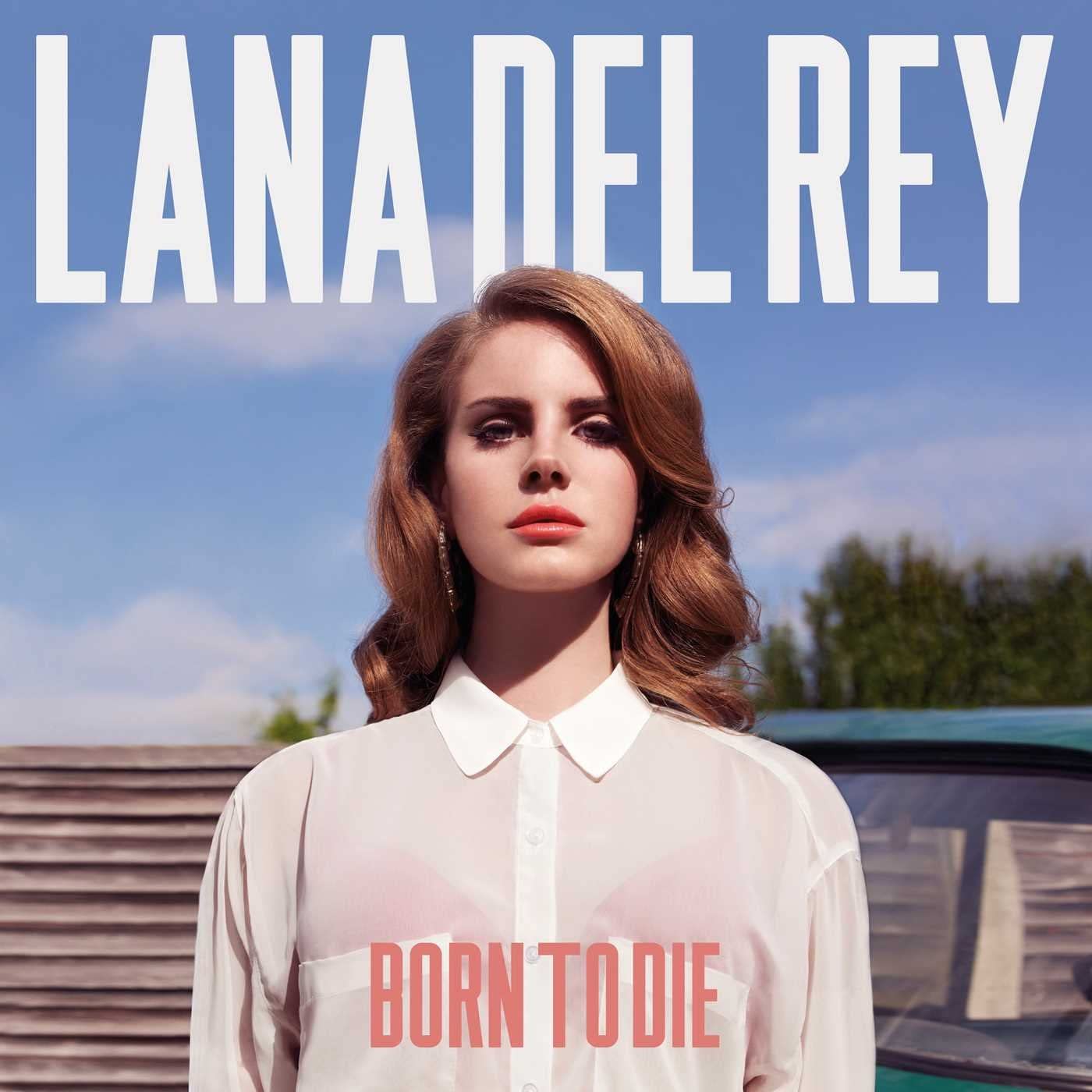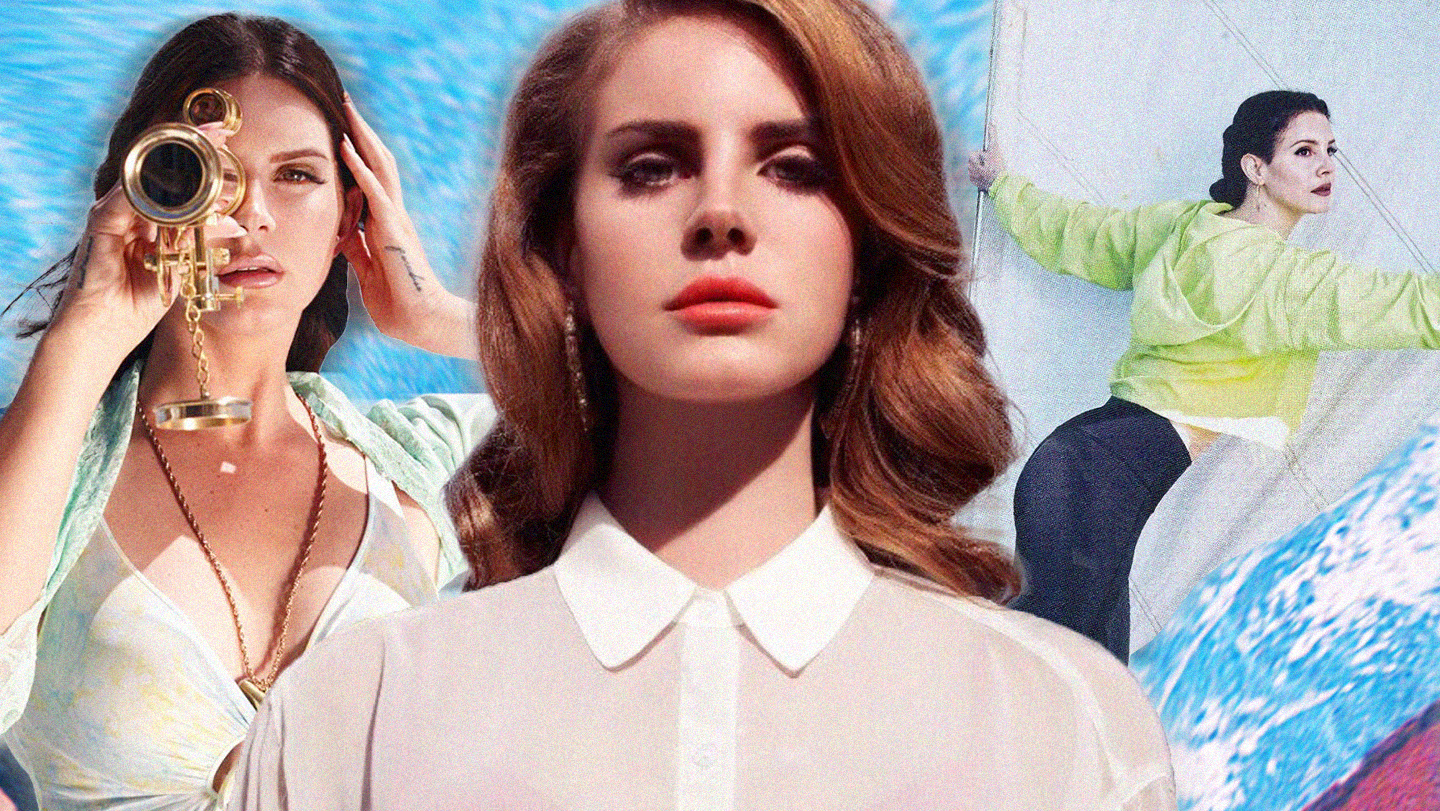Before the pitchforks come out, let us preface this with the argument that we believe there is no such thing as a bad Lana Del Rey album. Part of the artist’s beauty is that she has ridden the path of her 10-year career offering both minor and major chords in her work: lush pop bravado and sprawling folk and even trip-hop, often intertwined. She’s done it all, but has established a distinct throughline along the way, her songs rooted in despondency and a creative intrigue in the masochistic art of love.
It’s an impressive loyalty to a personal brand that, as time has passed, critics have gone from deriding as performative, to wholeheartedly respecting. She is the new poster woman for Americana in a country seemingly embracing the end times; the intensity of her self-scrutiny slowly turning outward, on later albums dissecting the state of her nation.
From her debut Born to Die through to her latest, Did you know that there’s a tunnel under Ocean Blvd, these are Lana Del Rey’s eight officially-released albums, ranked.

8. Honeymoon (2015)
By the time Honeymoon came around in 2015, Lana’s detractors had slowly started to realise that her ‘shtick’, as they’d framed it, wasn’t one at all. Having “proven” herself on Ultraviolence as a viable alternative artist, she returned, in part, to the sonic bravado of Born to Die. But she leant into the intensity of her infatuations (“Music to Watch Boys to”) and equally shrugged them off, on what is arguably the album’s best track, the trip-hop leaning “High By The Beach”; “Lights, camera, acción” she sang, aware of the watching world. Dreamy and cocksure, Honeymoon had a lyrical step-up, but the retreading of BTD’s admittedly iconic tropes makes it feel like semi-familiar ground.
7. Lust for Life (2017)
In 2017, Lana cut through the malaise that shaped her previous albums and made Lust for Life, an unorthodox pop outing that saw her usual guitar-toting production collaborators get swapped out for chart heavyweights like Max Martin and Benny Blanco. The results sparkled: the woozy romance of “Love”; the gorgeous, apocalyptic doom of “White Mustang” and “Lust for Life” with The Weeknd; the campfire sing-a-long “Tomorrow Never Came”. It’s the most polished Lana’s presented herself, but her refined style still held onto much of the grit that made her so appealing in the first place. A little overlong, but an impressive exercise by someone whose niche was identifiable, reliable and embraced by so many already.

6. Chemtrails Over the Country Club (2021)
Lana’s pandemic album harboured the aesthetic pastiche of old school Americana; the country club on its cover; the old cars and roller skating down open roads in its music videos. For many, it was a return to the Del Rey traditional canon, but done with a kind of wondrous, contemplative, staring-at-the-sky vocal delivery that felt piercingly fresh and revelatory. The songs didn’t feel like they were being squeezed into a radio-friendly format, and so they wind up being, to date, some of Lana’s finest melodic work. The breathless twirl of “down at the Men in Music Business Conference” on “White Dress”, one of her best; the hauntedness of “Tulsa Jesus Freak”. The album was a dedication to the women in her life, and after years of music about torrid men, it felt like a bright and necessary reframing.
5. Blue Banisters (2021)
In a recent interview, Lana stated that Blue Banisters was “a defensive album”, created to address rumours of cultural appropriation levelled against her. She did no press for it, allowing it to serve its sole purpose with no noise, and the result includes some of her strongest music. The lead single “Arcadia” is one of her most precise and cinematic songs since her Born to Die days. She crystallised the experience of gaining weight during the pandemic into “Black Bathing Suit”, a song strung together with dread and eerily familiar bittersweet feelings: “And if this is the end / I want a boyfriend”, she sang. If Lana Del Rey has spent decades feeding her emotions through a lens of grandiosity, here she turned inwards, and made her most literal and diaristic album yet.

4. Did you know that there’s a tunnel under Ocean Blvd (2023)
The latest instalment in Lana’s career is, paradoxically, an album that speaks at a low register — so low, in fact, that in future it might get swallowed by the more forthright records she’s made. Did you know that there’s a tunnel under Ocean Blvd was a “spiritual” album that spilled out of her, she has said, full of vulnerabilities and personal revelations that come through on songs with titles like “Candy Necklace”. If she was once seen as painfully serious, that has transformed into someone also brilliantly self-referential: the closing track revives and remixes “Venice Bitch”, for example. These are songs — lots of songs, yes — made by someone with a real clarity of character. Lana Del Rey is asking you to dive right into them.
3. Ultraviolence (2014)
With just one album under her belt (or two, depending on your framing of the Paradise edition of her debut), Lana Del Rey’s Ultraviolence was a cutthroat reframing of the glossy damsel image placed upon her by the media. Yes, she was a woman in full embrace of her sadness, but what she presented on her sophomore record was so gritty, lustrous and, as the album suggested, violent, that it became difficult to critique the dedication to her vision. The album’s producer, Dan Auerbach of The Black Keys, assisted with that: the whole thing woozes and reverberates from every surface like sun-scorched tarmac on an LA highway in the 70s; deliciously complete, its songs both sonically challenging and hookish.

2. Born to Die (2012)
The album Pitchfork once called “frequently terrible” wound up being one of the most seminal pop albums of the century. Lana Del Rey’s calling card — arguably her most famous to this day — was a winking ode to excess, glamour, tortured romance, more excess, more glamour and a lick of extreme old Hollywood pastiche. Born to Die: the title itself a reference to the extreme nihilism that has shaped so much of her output. It’s murky and doomed, a nod to an artist shrugging her life off; fantasising about a demise. If it was a character back then, it was a brilliant one: on songs about sadness, million dollar men and loving men more “than those bitches before”, she sounded like a slyly murderous Betty Boop (“Off to the Races”) and a woman bruised (“Video Games”). It says a lot about the indelible talent and skill of Lana Del Rey that so many people construed her perfectly executed vision as artifice. Few people create sonic portraits this confident, all enrapturing, influential. Over 10 years after its release, a new generation still cite it as a formative record in their lives. What’s more, the Paradise extension was even more magnificent, and features what — if we were to rank her songs rather than her albums — might just be her best standalone track: “Ride”. No further questions.
1. Norman Fucking Rockwell (2019)
Some albums feel like history completes them. Like the recorder is still running and what you hear is a fragmented version of something that’s finished by the listener over time. Norman Fucking Rockwell is so astoundingly vast, stretched and unspooled like a cassette tape, that to surmount it fully takes a little time. If Born to Die was the straight-to-the-vein pop hitter, then Norman Fucking Rockwell rewards multiple listens, its lumbering weight lifting with each passing one. It feels both plucked from the basement of a 70s record store and disturbingly contemporary, with references to iPads and a “blonde and gone” Kanye West. It is Lana at her most blindingly precise as a songwriter, all while pushing her own sonic boundaries: psych-rock and trip-hop enmeshed; scuzzy songs that stretch to nearly 10 minutes in length. If there was a glamourisation of America as a great but broken nation on her previous work, Norman Fucking Rockwell marked the moment she saw it as the epicentre of the modern apocalypse: culture’s degradation; an LA in flames. She may have dozens more records in her future, but this feels like Lana Del Rey at her apex: this is, and may always be, her defining masterpiece.


